[ad_1]
Historic forms of wheat, like kamut, are put to the take a look at for irritation, blood sugar, and ldl cholesterol management.
The primary killer in america and around the globe is what we eat. As you possibly can see within the graph beneath and at 0:15 in my video Friday Favorites: Are Ancient Grains Healthier?, our food plan kills hundreds of thousands greater than tobacco. What are the 5 most vital issues we will do to enhance our diets, based on the only most complete world research of the well being influence of vitamin? Eat much less salt, eat extra nuts, eat extra non-starchy greens, eat extra fruit, and, lastly, eat extra complete grains.  Any explicit kind of complete grains? What about so-called historic grains? Are they any higher than fashionable varieties? For example, what about kamut, described as “mummy wheat” and supposedly unearthed from an Egyptian tomb?
Any explicit kind of complete grains? What about so-called historic grains? Are they any higher than fashionable varieties? For example, what about kamut, described as “mummy wheat” and supposedly unearthed from an Egyptian tomb?
After WWII, the wheat business selected significantly high-yielding varieties for pasta and bread. Over the previous few years, although, among the extra historic grains—“outlined as these species which have remained unchanged over the past hundred years” regardless of agricultural revolutions—have been reintroduced to the market.
As you possibly can see beneath and at 1:13 in my video, nutritionally, kamut and einkorn wheat, which is the oldest wheat, have extra eyesight-improving yellow carotenoid pigments, similar to lutein and zeaxanthin, in comparison with fashionable bread and pastry wheat, as a result of the pigments have been bred out of the bread deliberately. Folks need their white bread white, however fashionable pasta flour (durum wheat) maintains a lot of that yellow dietary hue.
 As you possibly can see within the graph beneath and at 1:41 in my video, fashionable wheat might have much less lutein, nevertheless it tends to have extra vitamin E, as seen within the graph beneath and at 1:45. Based on straight vitamin and mineral concentrations, it’s just about a wash. Each fashionable and primitive sorts of wheat have quite a lot of every, however primitive wheats do have extra antioxidant capability, doubtless on account of their higher polyphenol content material, as you possibly can see within the graph beneath and at 2:00 in my video. To know if that makes any distinction, although, now we have to place it to the take a look at.
As you possibly can see within the graph beneath and at 1:41 in my video, fashionable wheat might have much less lutein, nevertheless it tends to have extra vitamin E, as seen within the graph beneath and at 1:45. Based on straight vitamin and mineral concentrations, it’s just about a wash. Each fashionable and primitive sorts of wheat have quite a lot of every, however primitive wheats do have extra antioxidant capability, doubtless on account of their higher polyphenol content material, as you possibly can see within the graph beneath and at 2:00 in my video. To know if that makes any distinction, although, now we have to place it to the take a look at.


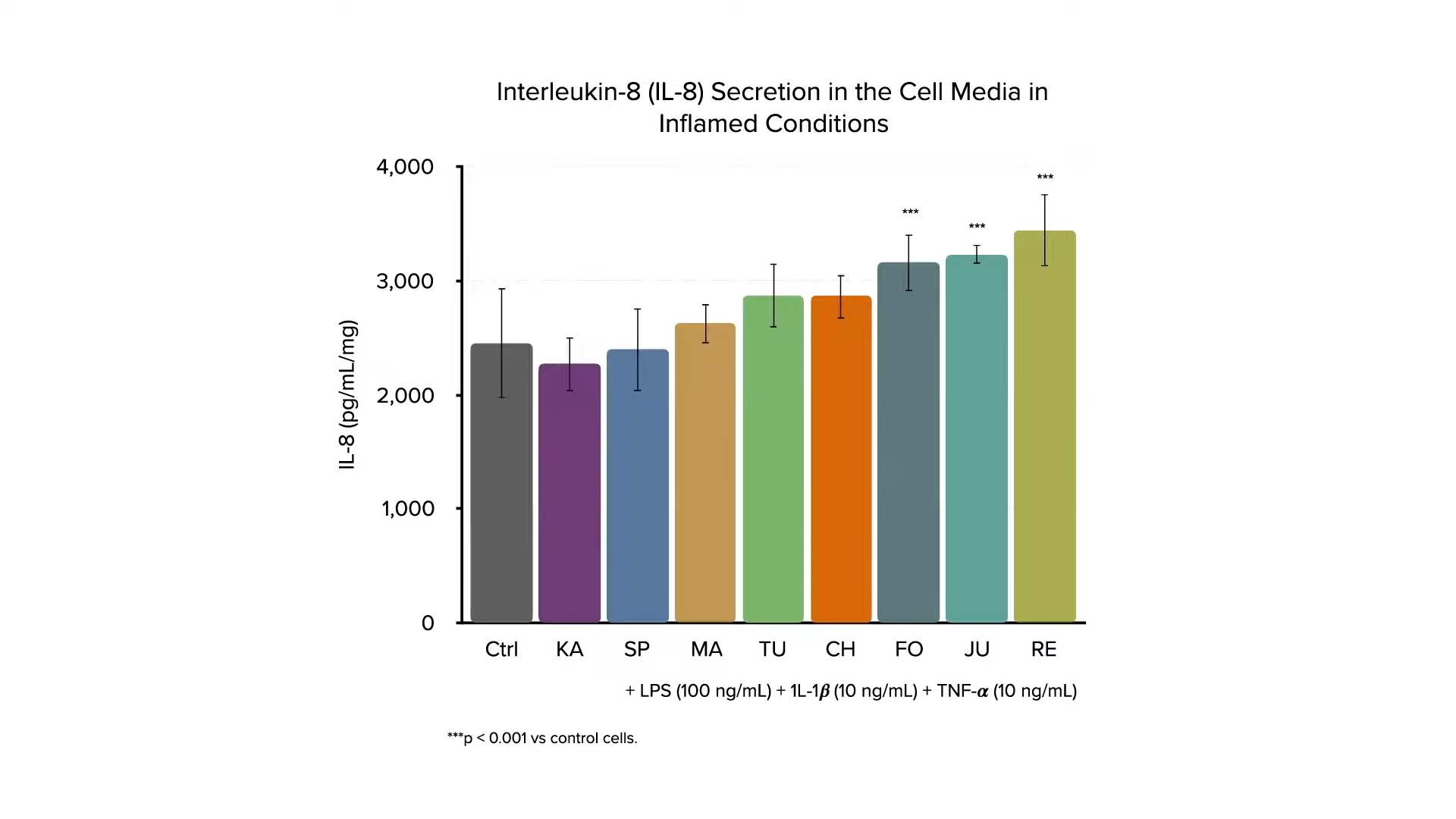
Should you expose human liver cells to digested bread made out of historic grains (kamut and spelt), heritage sorts of wheat, or fashionable strains, then expose the cells to an inflammatory stimulus, the fashionable wheat strains appear much less in a position to suppress the irritation, as you possibly can see within the graphs beneath and at 2:09 in my video. The investigators conclude that though these totally different grains appear to be very comparable nutritionally, they seem to exert totally different results on human cells, “confirming the potential well being benefits of historic grains.” 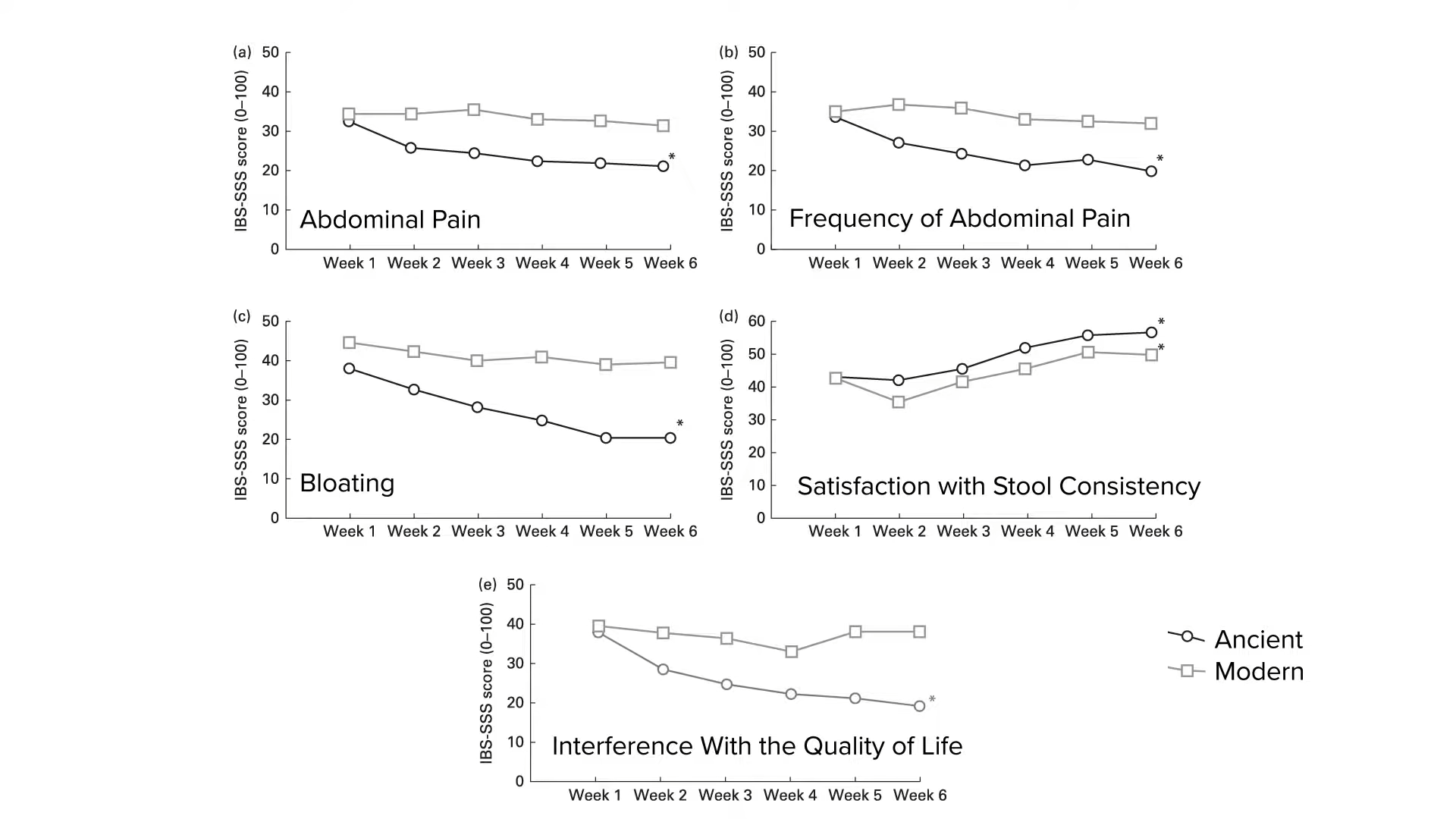 That was in a petri dish, although. What about individuals? If historic sorts of wheat are higher at suppressing irritation, what for those who took individuals with irritable bowel syndrome (IBS) and randomized them to obtain six weeks of wheat merchandise made out of contemporary wheat or historic wheat—on this case, kamut? Identical quantity of wheat, simply differing types. If there is no such thing as a distinction between the wheats, there’d be no distinction in individuals’s signs, proper? However, when research contributors within the management group have been switched to the traditional wheat kamut, they skilled much less belly ache, much less frequent ache, much less bloating, extra satisfaction with stool consistency, and fewer interference with their high quality of life, in comparison with the fashionable wheat. So, after switching to the traditional wheat, they’d “a major world enchancment within the extent and severity of signs associated to IBS…”
That was in a petri dish, although. What about individuals? If historic sorts of wheat are higher at suppressing irritation, what for those who took individuals with irritable bowel syndrome (IBS) and randomized them to obtain six weeks of wheat merchandise made out of contemporary wheat or historic wheat—on this case, kamut? Identical quantity of wheat, simply differing types. If there is no such thing as a distinction between the wheats, there’d be no distinction in individuals’s signs, proper? However, when research contributors within the management group have been switched to the traditional wheat kamut, they skilled much less belly ache, much less frequent ache, much less bloating, extra satisfaction with stool consistency, and fewer interference with their high quality of life, in comparison with the fashionable wheat. So, after switching to the traditional wheat, they’d “a major world enchancment within the extent and severity of signs associated to IBS…”
What about liver irritation? The liver operate of these with nonalcoholic fatty liver illness randomized to eat kamut improved, in comparison with these consuming the identical quantity of normal wheat, suggesting kamut is superior, as you possibly can see beneath and at 3:47 in my video.

Folks with diabetes, had higher ldl cholesterol and higher insulin sensitivity on the identical historic grain, as shown beneath and at 3:57.
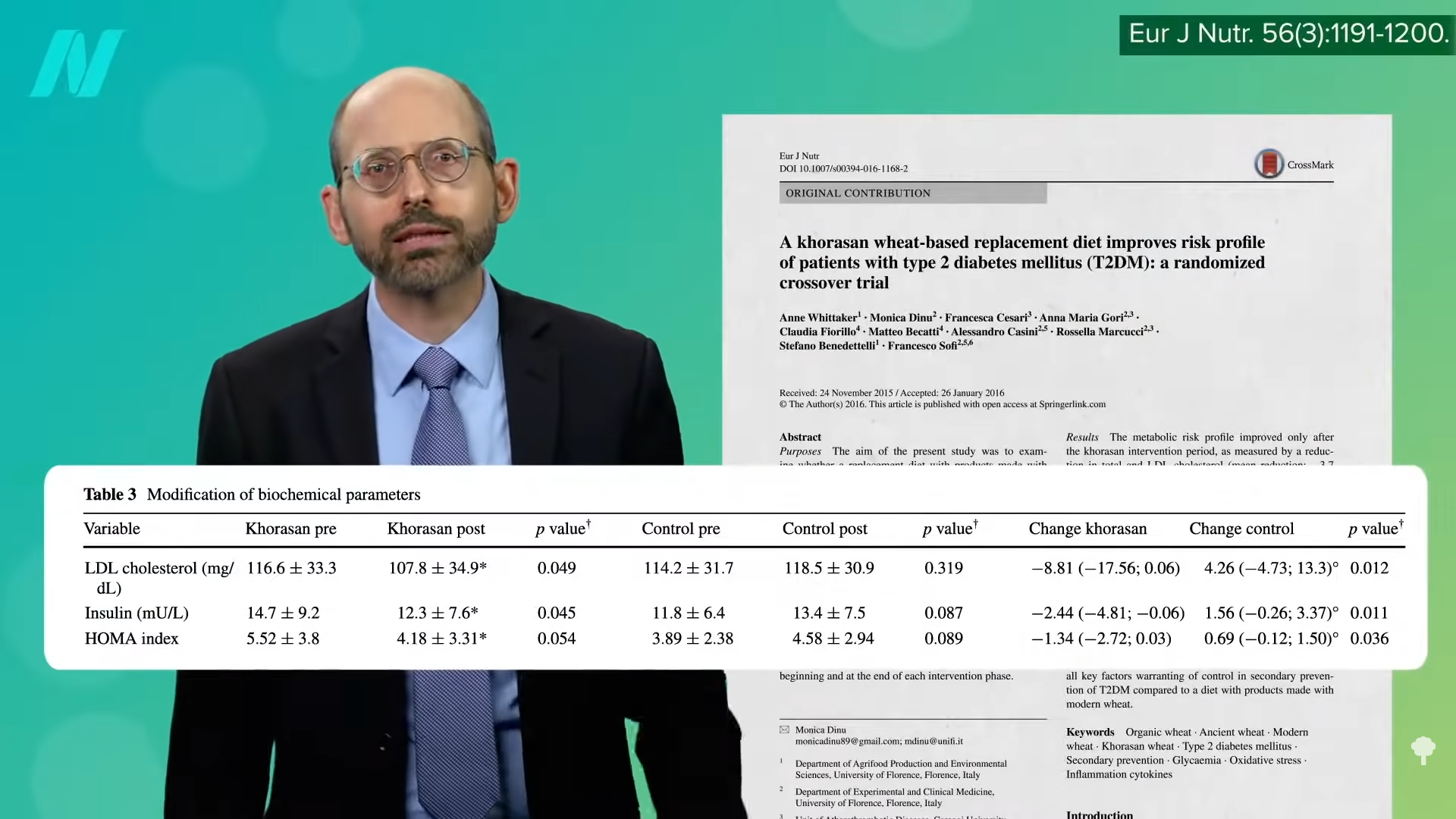
And people with coronary heart illness? They had higher blood sugar management and higher ldl cholesterol, as shown beneath and at 4:03.
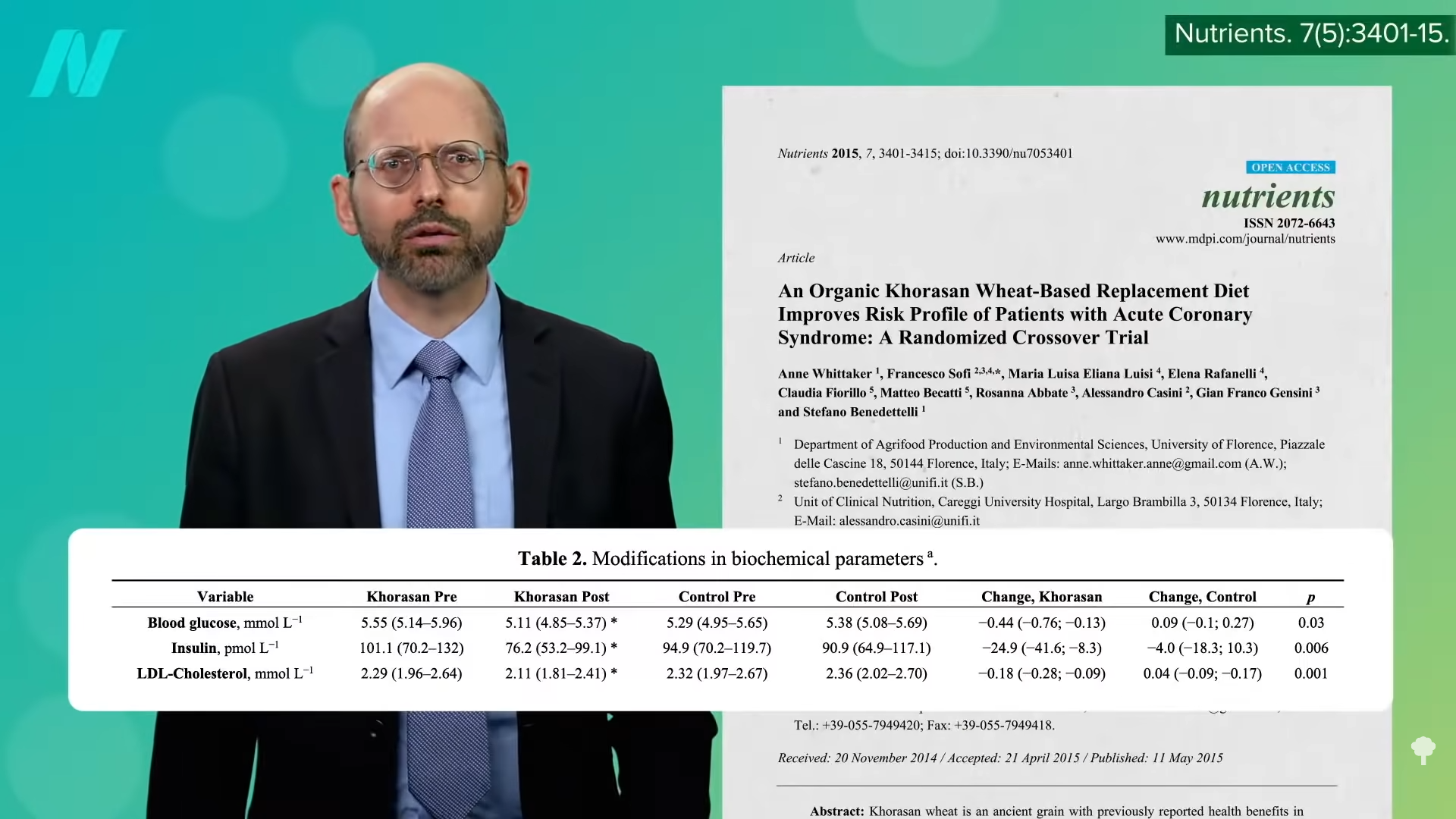
And, individuals with out overt coronary heart illness had higher artery operate, as you possibly can see beneath and at 4:06 in my video.
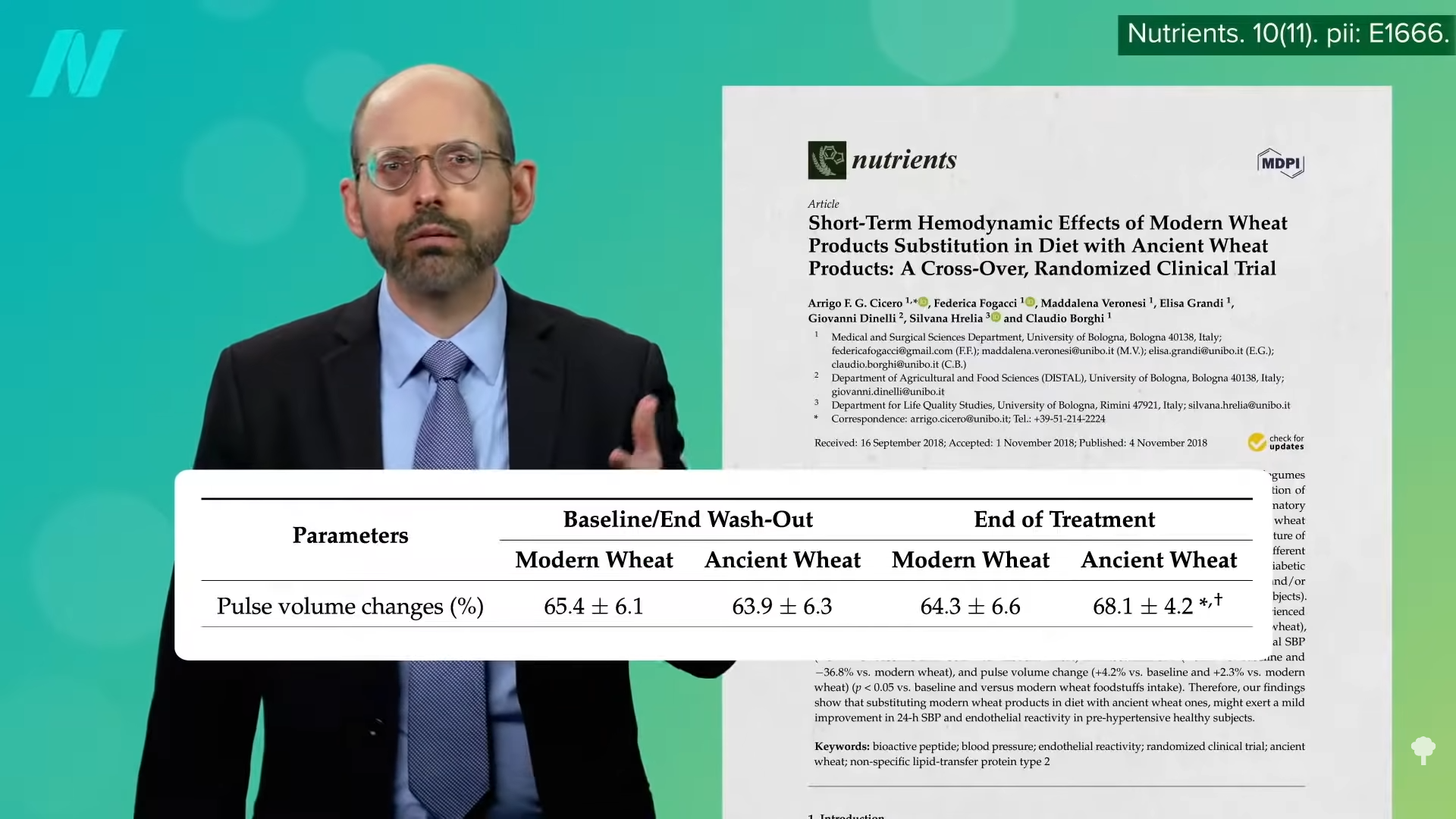
The underside line is that findings derived from human research recommend that historic wheat merchandise are extra anti-inflammatory and should enhance issues like blood sugar management and ldl cholesterol. “Provided that the general variety of human interventional trials carried out to this point are numerically inadequate, it’s not potential to definitively conclude that historic wheat varieties are superior to all business, fashionable wheat counterparts in lowering continual illness threat.” Nevertheless, the perfect accessible information do recommend they’re higher for us.
No matter what kind of wheat you might eat, a phrase to the clever: Don’t eat the plastic bread-bag clip. A 45-year-old man offered with bloody stools, and his CT scan confirmed the offending piece of plastic from his bag of bread, as you possibly can see beneath and at 4:53 in my video. When the affected person was questioned, he “admitted to habitually consuming rapidly with out chewing correctly.”
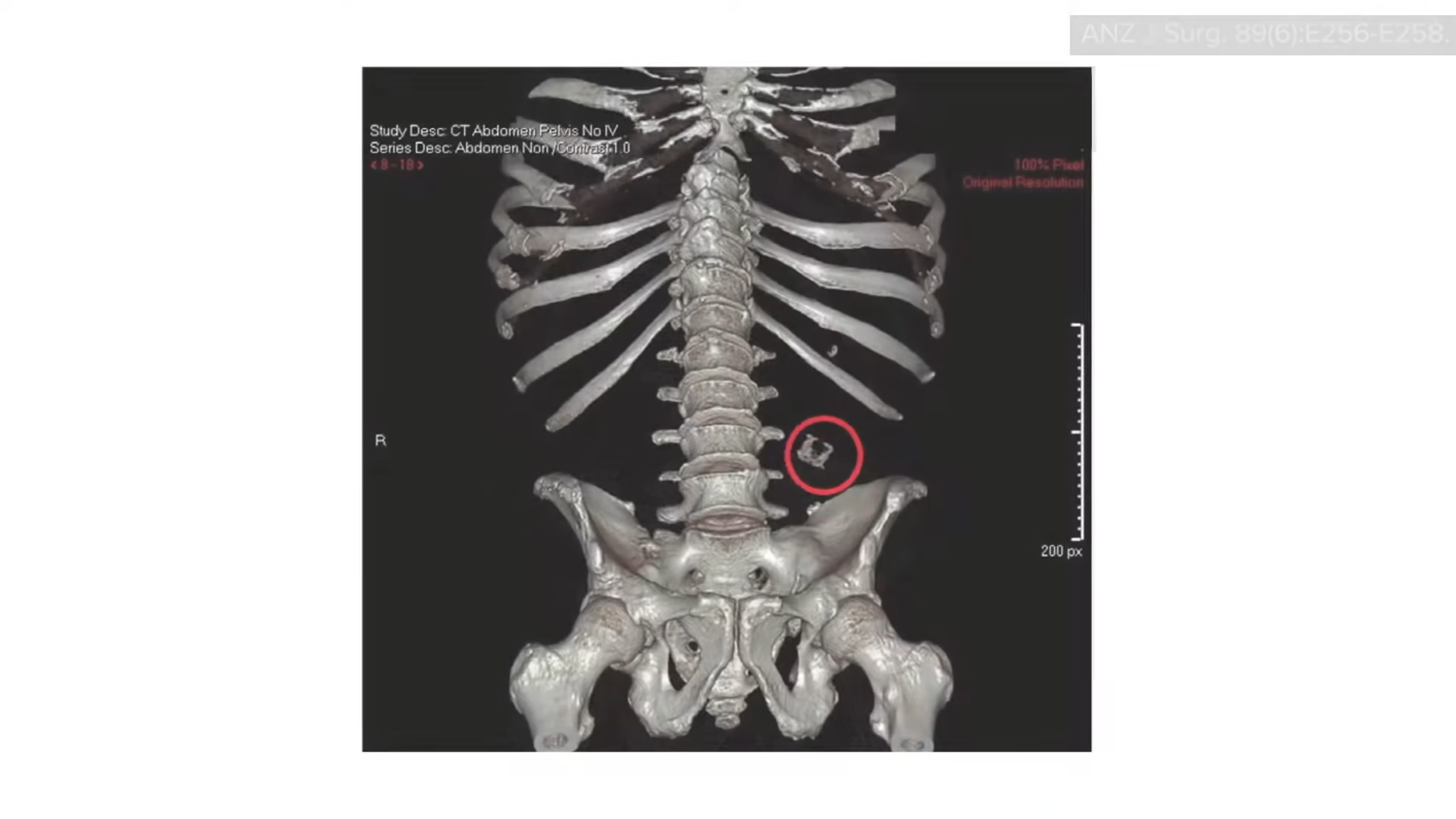
Complete grains—ideally intact ones and historic and fashionable varieties alike—are an integral a part of my Daily Dozen guidelines, the healthiest of wholesome issues I encourage everybody to attempt to match into their day by day routines.
Complete grains are particularly good for our microbiome. Be taught extra within the associated posts beneath. What about gluten? Additionally, see the associated posts beneath.
[ad_2]
Source link





















